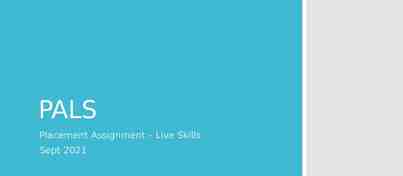Introduction to Anatomy NMS Week 2 Catherine Moore
33 Slides6.48 MB
Introduction to Anatomy NMS Week 2 Catherine Moore
Session outcomes By the end of the session students will be able to describe basic anatomical terms By the end of the session students will be able to use these terms to describe normal movement 21/02/24 Catherine Moore, Physiotherapy 2
Outcomes Module: Bi. Discuss basic, core rehabilitation & therapy principles and concepts CSP: 3.5 – Demonstrate a capacity for effective communication and interpersonal skills HCPC: 8.4 select, move between and use appropriate forms of verbal communication with service users and others BASRaT: B2g. Demonstrate skill in analysis of normal movement patterns C1b. Subjective Evaluation - demonstrate knowledge of standard nomenclature and terminology. 21/02/24 Catherine Moore, Physiotherapy 3
Anatomical position Standing Feet parallel Facing Forwards Arms by side Palms facing forwards http://anatomy.tv 21/02/24 Catherine Moore, Physiotherapy 4
Planes Coronal plane (frontal) Transverse plane (horizontal) Sagittal plane 21/02/24 Catherine Moore, Physiotherapy 5
Sagittal plane Divides the body into right and left halves Movement of a body part FORWARDS is generally called FLEXION Movement of a body part BACKWARDS is generally called EXTENSION 21/02/24 Catherine Moore, Physiotherapy 6
Coronal (frontal) plane Divides the body into front and back parts Movement of a body part away from the mid-line is generally called ABDUCTION Movement of a body part towards the mid-line is generally called ADDUCTION 21/02/24 Catherine Moore, Physiotherapy 7
Transverse (horizontal) plane Divides the body into upper and lower parts Rotation of a body part outwards is generally called LATERAL (external) ROTATION Rotation of a body part inwards is generally called MEDIAL (internal) ROTATION 21/02/24 Catherine Moore, Physiotherapy 8
Axis Coronal plane moves around a sagittal axis Transverse plane moves around a vertical axis Sagittal plane moves around a coronal axis 21/02/24 Catherine Moore, Physiotherapy 9
Anterior and posterior Anterior – towards the front / in front of Posterior – towards the back / behind 21/02/24 Catherine Moore, Physiotherapy 10
Medial and lateral Medial – closer to the midline Lateral – further away from the midline 21/02/24 Catherine Moore, Physiotherapy 11
Superior and inferior Superior – Above / on top of Inferior – Below / underneath 21/02/24 Catherine Moore, Physiotherapy 12
Proximal and distal Proximal – nearer to the trunk Distal – further from the trunk 21/02/24 Catherine Moore, Physiotherapy 13
Superficial and deep Superficial – closer to the surface Deep – further from the surface Splenius capitus is superficial to erector spinae 21/02/24 Catherine Moore, Physiotherapy 14
Bones Function of bone Protection Mobility Stability Leverage Nutrition 21/02/24 Catherine Moore, Physiotherapy 15
Bones 5 main types of bone: Long Short Flat Sesamoid Irregular 21/02/24 Catherine Moore, Physiotherapy 16
? 21/02/24 Catherine Moore, Physiotherapy 17
? 21/02/24 Catherine Moore, Physiotherapy 18
? 21/02/24 Catherine Moore, Physiotherapy 19
? 21/02/24 Catherine Moore, Physiotherapy 20
? 21/02/24 Catherine Moore, Physiotherapy 21
Joints Areas where bones are linked together Some joints are linked by fibrous or cartilaginous tissue and allow little movement Most joints in the body are SYNOVIAL JOINTS and are freely moveable 21/02/24 Catherine Moore, Physiotherapy 22
Joints (3 types) Synovial Cartilaginous - Primary - Secondary Fibrous - Gomphosis - Suture - Syndesmosis 21/02/24 Catherine Moore, Physiotherapy 23
Features of a synovial joint Fibrous capsule Articular cartilage Synovial cavity and fluid Synovial membrane 21/02/24 Catherine Moore, Physiotherapy 24
Synovial joint types Ball and socket Hinge Pivot Useful revision section and quiz on Anatomy TV Saddle Ellipsoid/condylar Gliding/plane 21/02/24 Catherine Moore, Physiotherapy 25
What are these? Ligaments Connect bones Collagen Provide stability 21/02/24 Catherine Moore, Physiotherapy 26
Muscle http://training.seer.cancer.gov/anatomy/muscular/structure.html Composed of bundles of individual fibres. Muscles which attach to bones are called skeletal muscles. 21/02/24 Catherine Moore, Physiotherapy 27
Muscle Muscle can attach directly to bone or via a tendon The shape and arrangement of the muscle will effect its function 21/02/24 Catherine Moore, Physiotherapy 28
Summary A joint is where 2 or more bones meet and is usually where movement occurs Synovial joints contain synovial fluid and the joint surfaces are lined by hyaline cartilage Bones are held together at joints by ligaments Movement of bones at a joint is produced by the contraction of muscles 21/02/24 Catherine Moore, Physiotherapy 29
Quiz With a partner stand in the anatomical position 1.Point to which of these is most proximal – shoulder, elbow, wrist? 2.Which is most distal – hip, knee, foot? 3.Point to the medial side of the arm 4.Point to the lateral aspect of the leg 21/02/24 Catherine Moore, Physiotherapy 30
Quiz 5. 6. 7. 8. 9. Point to the anterior aspect of the trunk Which of these is most superficial – skin, fat, muscle? Perform a movement in the sagittal plane Perform a movement in the frontal plane Name the 3 main types of joint 21/02/24 Catherine Moore, Physiotherapy 31
Session outcomes By the end of the session students will be able to describe basic anatomical terms By the end of the session students will be able to use these terms to describe normal movement 21/02/24 Catherine Moore, Physiotherapy 32
Thank you!






































